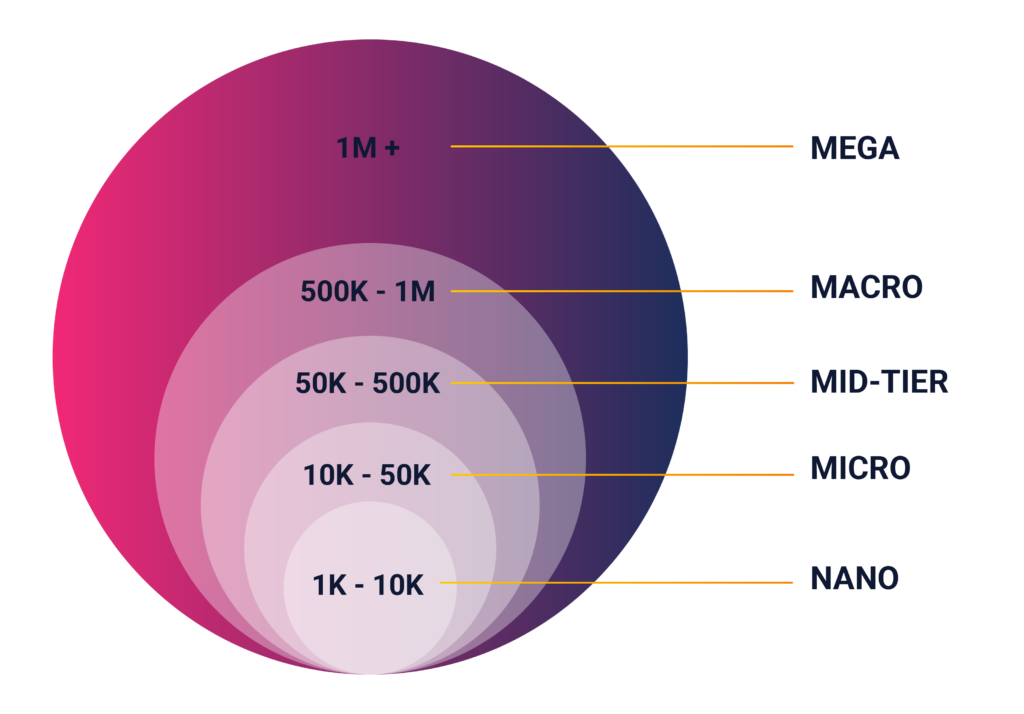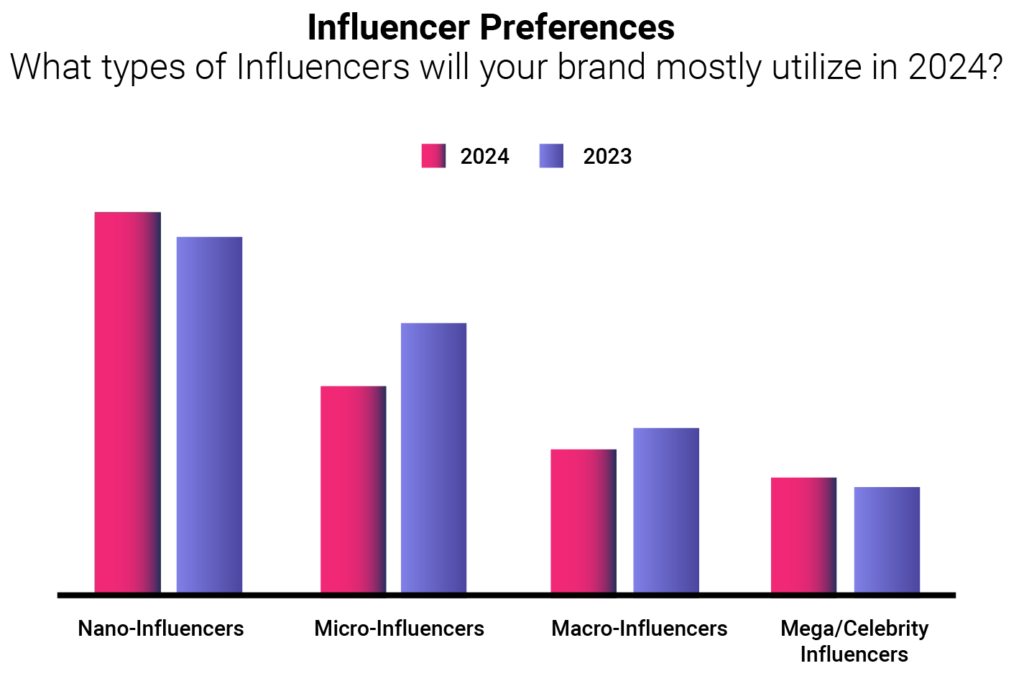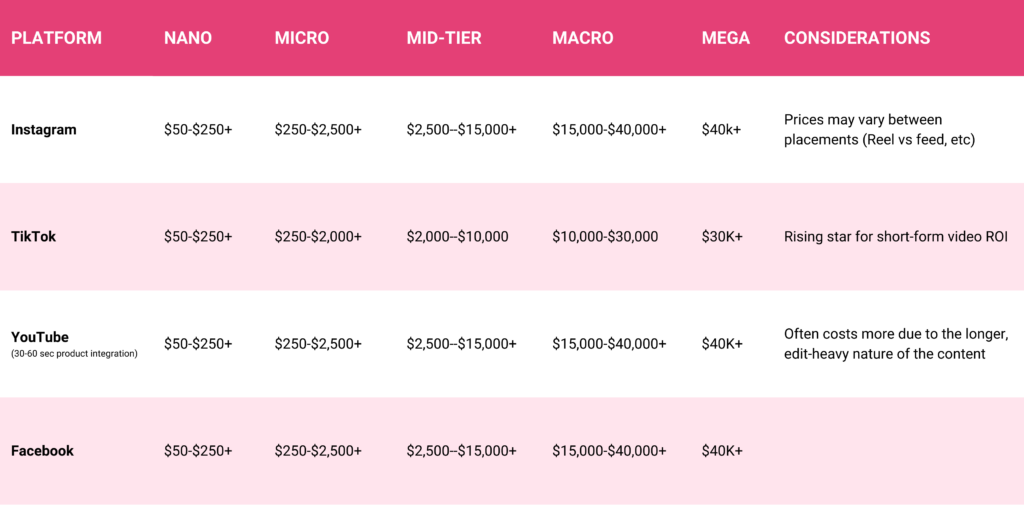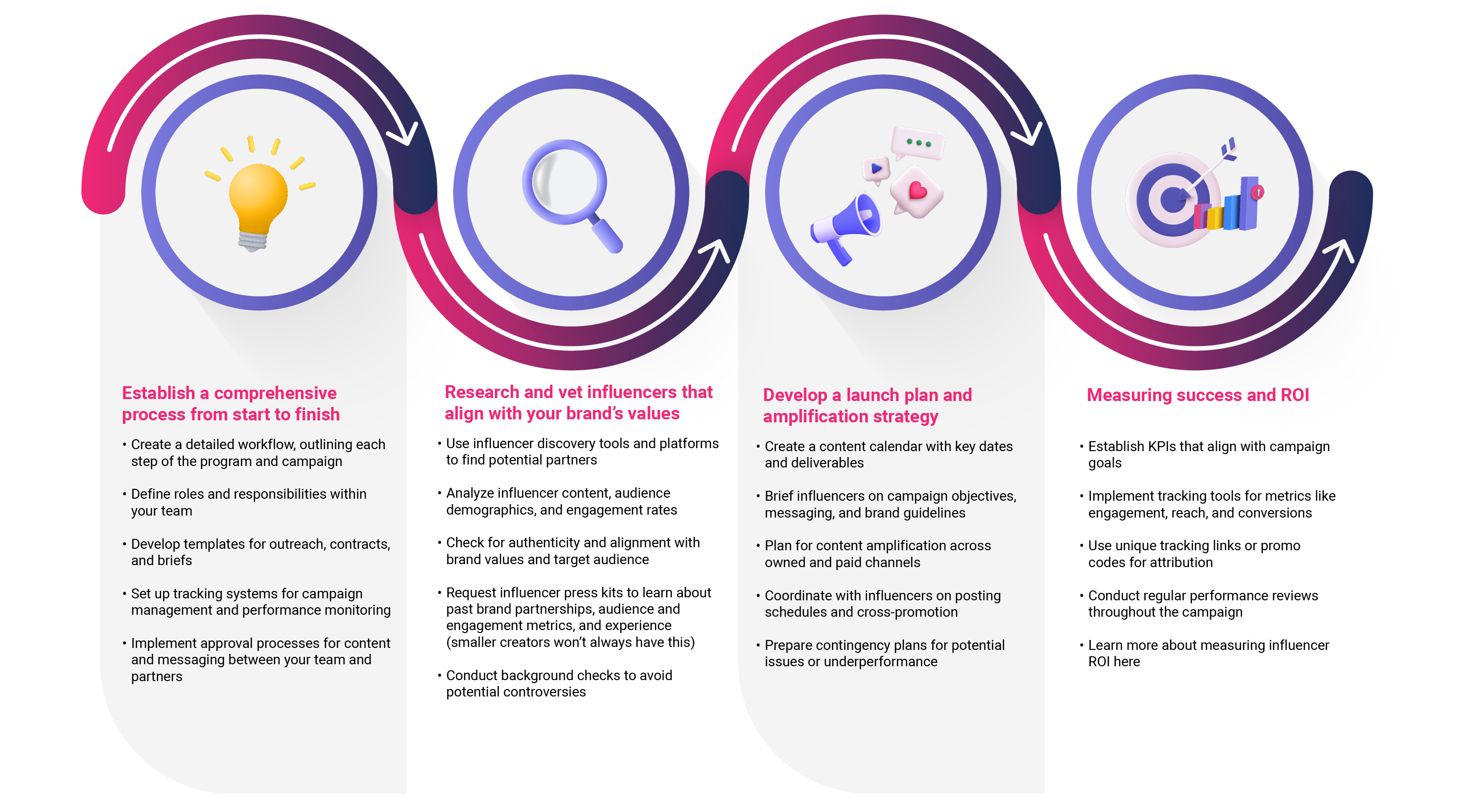Question of the day – how much does influencer marketing cost? Let’s face it, whether you’re the CMO of a Fortune 500 enterprise or a private seller with a TikTok Shop account, using influencers as part of your marketing strategy is non-negotiable these days. So you’ve established you need an influencer collaboration plan, the next issue is trying to understand how to set up an influencer program as well as pricing standards and other costs. This part can be difficult in our ever-evolving digital world (not to mention, it’s a well gate-kept topic in the industry). Luckily, your internet sleuthing has brought you here. In this comprehensive guide, we’ll explore the costs associated with influencer marketing, outline general best practices, and provide insights into industry trends, pitfalls, pricing structures, and strategies for maximizing your investment.
The State of Influencer Marketing
It shouldn’t be a surprise to anyone with an Instagram account, but brand x influencer collaboration has experienced exponential growth over the last several years, with no signs of slowing down. By the end of 2024, the industry is projected to reach a staggering $24 billion in value, reflecting the increasing investment brands are placing in this channel. To understand pricing expectations, let’s first take a look at common categorizations and some trends in the industry.
What Are The Types of Influencers by Audience Size
The first (and most obvious) consideration when working with influencers is understanding their reach potential and audience. These can be considered “tiers,” which may vary somewhat depending on where you’re looking, but generally follow this breakdown:

Nano-influencers (1,000 – 10,000 followers)
What we love:
- Often see the highest engagement rates
- Most cost-effective option, especially for activations with multiple influencers
- Highly authentic and relatable content
- Niche, targeted audiences
- Often seen as peers rather than celebrities
- Limited reach but strong community connection
Considerations:
- May lack professional content creation skills
Micro-influencers (10,000 – 50,000 followers)
What we love:
- Generally strong engagement rates
- More professional content than nano-influencers
- Cost-effective option, especially when working with multiple influencers
- Often have expertise in specific niches
- Growing but still manageable audience
Considerations
- May work with multiple brands
Mid-tier Influencers (50,000 – 500,000 followers)
What we love:
- Generally moderate engagement rates
- Professional-grade content creation
- Often have a diverse, broader audience
- Balance of reach and engagement
- May have a team for content production
Considerations
- May work with multiple brands
Macro-influencers (500,000 – 1 million followers)
What we love:
- Often have a team for content and management
- Potential to drive substantial traffic and sales
- Suitable for large-scale campaigns
Considerations:
- Often lower engagement rates, but offer significant reach and brand awareness
- May have less personal connection with audience
Mega-influencers (1 million+ followers)
What we love:
- Massive reach and brand exposure
- Celebrity status and name recognition
- Potential for viral content
- Less targeted audience, but broad appeal
- Best for global brand campaigns and major launches
Considerations:
- Highest cost, usually starting at $20,000+ per post
- Lowest engagement rates, often below 1%
The Shift Toward Micro and Nano Influencers
While celebrity endorsements certainly have their place, there’s been a noticeable move towards collaborations with smaller-scale creators. Influencers at the micro and nano levels often boast higher engagement rates and more niche audiences, making them attractive partners for brands looking to connect with specific demographics or when utilizing multiple influencers. The shift also highlights consumers’ preference toward authenticity and engagement over sheer follower count. This industry shift can be seen in a 2024 Influencer Marketing Hub brand survey.

source: Influencer Marketing Hub
Influencer Pricing Averages by Tier & Platform
Putting a hard price tag on a constantly changing industry can be difficult. That said, getting a basic pulse check on pricing can start with understanding the platform and type of influencer you’re looking to partner with. The table below outlines a general range you might expect to see across these vertices.

Factors Affecting Influencer Costs
While the table above can give you a rough range of costs, the pricing landscape is complex, and actual fees can vary widely depending on a number of additional factors. Here are some other key components to consider when developing a budget for your influencer activation.
Platform(s)
The platform and/or number of platforms the influencer is on can play a role in the pricing. For example, if an influencer you’re vetting has a collective audience of 100K, with 70K of that on Instagram and 30K on TikTok, they may charge a combined rate to run across both of them. Platform content formats will also play a part in that – more on that below.
Content Type
Not all content is created equal, and neither is the associated cost. For example, a simple static #sponsored post on Instagram showing a product with a brand mention requires less development than a 20-minute product tutorial on YouTube. A rule of thumb – generally, video content costs more than static. Make sure to consider the production time and quality of content in your budget.
Pricing Structure
The fee structure is another consideration. This can include several structures, but two common ones are:
- Pay-per-post: A flat fee for creating and publishing content. This is the simplest type, often based on industry benchmarks or fair market rates sourced from previous collaborations
- Performance-based pricing: Paid based on the agreed-upon key performance metrics (KPI) results the influencer can drive. For example, a beauty brand may pay a $15 CPA (cost-per-acquisition) for every sale the influencer drives (Think of when you see an influencer sharing a promo code). Other common KPIs include:
Engagement
Engagement (likes, comments, shares, etc) is becoming the gold standard metric, beyond sheer audience size. Creators with higher engagement rates (ER) often justify higher fees. However, it’s important to weigh this against their reach potential. For example, a single nano influencer may drive a high ER, but if their potential reach is only a thousand, it may be worth increasing the number of nano influencers you work with or finding a partner with a good balance of reach and engagement (keep in mind every activation is unique).
Engagement Rate = (Total Engagements / Total Impressions) × 100
Usage Rights
Now for the legal stuff (for educational purposes only. We’re marketers, not lawyers). Once you’ve found the creators you want to work with, you’ll need to consider usage rights and how those affect how you want to leverage the influencer’s work. There are a number of things to keep in mind, but here are a few common thought-starters to get you going:
- Is the influencer posting organically only to their channel(s)?
- Do you plan on repurposing the influencer content (IGC) on your brand’s channels or use them in campaigns?
- Do you want your brand to have ownership rights or will they remain with the creator (IP defaults to influencer ownership)
- What platforms have you agreed to have them post on?
- Do you plan to utilize platform-branded content tools to put paid dollars behind their content?
Things like licensing terms (limited use vs perpetual rights, etc), content repurposing and ownership rights, and the like will need to be clearly defined in your contract. Additional usage rights beyond organic posting to the creator’s channels will generally increase the price.
Exclusivity
Basically the legal equivalent of asking your influencer, “So, what are we?”Another detail to consider is whether it’s a concern if your influencer were to also work with a competitor brand during your partnership. An exclusivity clause essentially sets parameters to limit the influencer from working with certain brands or in specific categories. They’re not needed in all cases but are an option if that’s a must for your activation.
But surprise, they generally cost more. Why? Because being an exclusive partner to your brand means the influencer would have to turn down other potential offers from competing brands during the term period. For costs, it really depends on the vertical the advertiser is in, the term length, and how many competitors are on the list. For example, exclusivity for a small niche product category would likely cost less than with a large CPG food brand.
Management Costs
Finally, you’ll want to budget for the associated costs of your influencer activation or program. This can include things like:
- Planning and management costs: if you’re managing in-house, consider the hours needed for a team member to own the process. Whether a one-off activation or ongoing program, there are a host of tasks running in the background, from influencer research, vetting, briefing, influencer management, campaign management, reporting, and so on.
- Networking and sourcing: There are a number of ways to research and source influencers, from using enterprise software or working with an agency to have access to their tools and network.
Generally, setting up an influencer program in-house, especially for infrequent activations, can be costly. Here at AdParlor, we work with brands across the spectrum from providing support in specific parts of the process to owning the entire program from start to finish.
Getting Started With Influencer Marketing
Now that you have an idea of the factors that influence (no pun intended) the costs of working with creators, let’s lay the groundwork for activation. Whether launching a one-off collaboration or an ongoing partnership, careful planning and execution are a must. By following a structured approach, your brand can maximize its return on investment and build meaningful partnerships with influencers. Let’s take a look at the steps:
Set clear goals and objectives
- Anyone who’s been in a marketing 101 class will immediately know this acronym – Define specific, measurable, achievable, relevant, and time-bound (SMART) goals
- Set clearly defined goals and communicate them with your creator partners. For example, you may want to drive website traffic and increase CTR or increase brand awareness within a specific geo market
- Create an influencer brief that defines what you’re looking to get out of the partnership, specific campaign objectives, brand messaging you want to communicate, or any other details pertinent for the influencer to know
Establish a comprehensive process from start to finish
- Create a detailed workflow, outlining each step of the program and campaign
- Define roles and responsibilities within your team
- Develop templates for outreach, contracts, and briefs
- Set up tracking systems for campaign management and performance monitoring
- Implement approval processes for content and messaging between your team and partners
Research and vet influencers that align with your brand’s values
- Use influencer discovery tools and platforms to find potential partners
- Analyze influencer content, audience demographics, and engagement rates
- Check for authenticity and alignment with brand values and target audience
- Request influencer press kits to learn about past brand partnerships, audience and engagement metrics, and experience (smaller creators won’t always have this)
- Conduct background checks to avoid potential controversies
Develop a launch plan and amplification strategy
- Create a content calendar with key dates and deliverables
- Brief influencers on campaign objectives, messaging, and brand guidelines
- Plan for content amplification across owned and paid channels
- Coordinate with influencers on posting schedules and cross-promotion
- Prepare contingency plans for potential issues or underperformance
Measuring success and ROI
- Establish KPIs that align with campaign goals
- Implement tracking tools for metrics like engagement, reach, and conversions
- Use unique tracking links or promo codes for attribution
- Conduct regular performance reviews throughout the campaign
- Learn more about measuring influencer ROI here
Need a roadmap? Save this infographic as a quick-reference guide!


Considerations Before You Start
Lastly, it’s important to be aware of potential challenges and prepare accordingly. By thinking ahead, you can help your brand navigate potential pitfalls and brand risks to ensure a smooth campaign execution. Let’s dive into some of the more common scenarios:

Dealing with Problematic Creators or Late Assets: Establish multiple points of contact with influencers and use project management tools for transparent timelines and deliverables.
Detailed Contracts: Include clauses for late deliveries, content quality standards, and dispute resolution. Specify consequences for missed deadlines or subpar content.
Backup Plans: Have a roster of alternative influencers ready. Prepare contingency content to fill gaps left by late deliveries.
Unexpected costs: These come in many forms, but one common example is product samples and shipping costs. Make sure to budget for sending products to influencers, including international shipping fees.
Content revisions: Factor in time and resources needed for things like content revisions, reshoots (if applicable), or brief revisions.
Usage Rights Extensions: Remember that fun little legal talk we just had? Be prepared for fees associated with extending content usage beyond initial agreements if there’s a chance that may be needed.
Legal Fees: When establishing your contracts and agreements, consider budgeting for legal review and potential dispute resolutions.
Quality Control Process: Implement a robust review system to catch issues early and provide clear feedback and revision guidelines.
Brand Safety and Risks: Thoroughly vet potential influencers. Develop a crisis management plan for handling potential controversies and have a response template for various scenarios (looking at you, Adidas).
Disclosure Compliance: Ensure influencers understand and follow FTC guidelines for sponsored content. Provide clear instructions for proper disclosure of partnerships in the influencer brief.
With all that said, having an influencer marketing strategy is an absolute must for brands looking to connect with their target audience in an authentic and engaging manner. The cost of influencer marketing can vary greatly, but this article should provide a foundation for pricing factors and how to get started. Your brand can craft effective campaigns that drive real results by understanding influencer tiers and associated costs, setting clear goals, and navigating potential challenges and brand safety along the way.
As the landscape continues to evolve, the importance of strategic partnerships cannot be overstated. If you’re ready to elevate your brand through influencer marketing but need guidance on where to start or how to optimize your efforts, don’t hesitate to reach out!
In the meantime, feel free to learn more about our proprietary management process and methodology here at AP.
